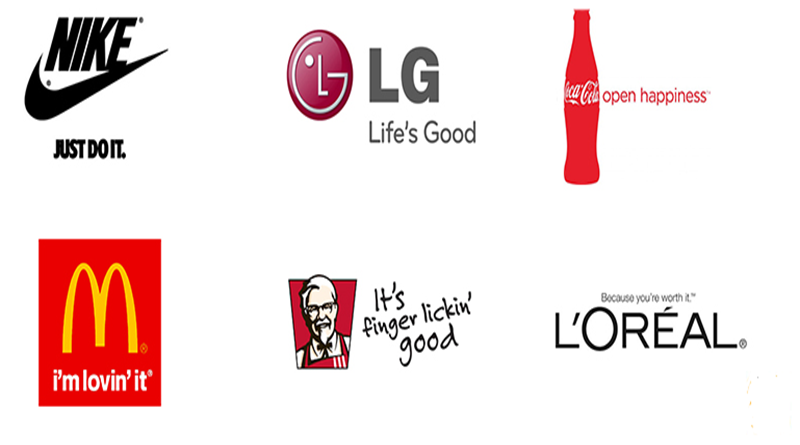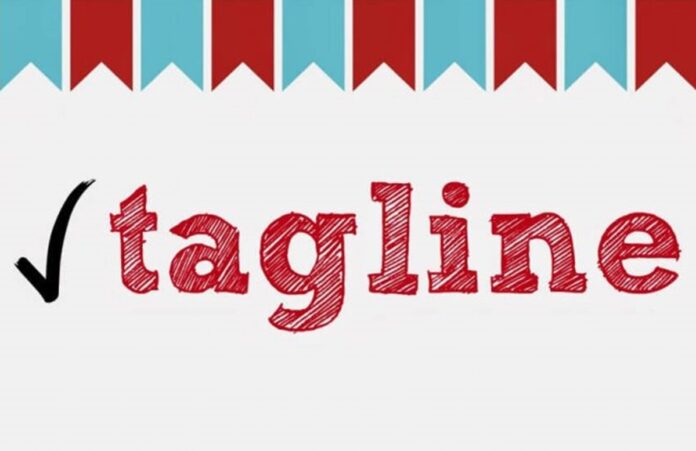You must have heard or read a lot of them, applauded some, and criticized others. But what is a tagline, exactly? Is it essential for a brand to have one? If so, how do you come up with a good tagline?
Finding the ideal tagline is a complex undertaking. You want a logo that expresses who you are, what you stand for, and why people should select you. You want it to be impactful, memorable, descriptive, and likable, which is a vast order.
Many people are inspired by typical taglines like Nike’s “Just Do It” or Apple’s “Think Different.” But what if you’re not selling high-end sporting apparel or cutting-edge technology? Even if you’re a mom-and-pop bakery, can you develop a powerful statement that captures these elements?
This tutorial will address all of your questions about taglines, their relevance, types, and how to create one. But first, for those unfamiliar with the term, here is a definition of a tagline.
What Is a Tagline?
A tagline is a concise, memorable summary that expresses the brand message concisely and. This brief explanation serves as the brand’s catchphrase and helps establish the brand’s personality, which in turn aids in establishing the brand in the market.
Why Is It Important To Have A Tagline?
There’s no doubt that taglines are an essential component of a brand; some firms must be known solely by their taglines and impact their market placement. The tagline is a potent communication message that becomes an earworm in the public’s mind.
It’s designed to have a long-term impact with just one interaction. It conveys the brand identity to the consumer in terms and, if well-crafted, the overall benefit of what is delivered to them. If Mcdonald’s tagline had been “It’s Tasty AF” instead of “I’m Lovin’ it,” the company’s brand positioning would have been entirely different.
What is a Tagline, and How Does It Work?
When companies seek to offer new or enhanced products or services, break into new verticals or markets, or reinvent or differentiate themselves, they deploy marketing campaigns. The purpose of these campaigns is to communicate a promotional message to your target market and have them respond to it, and companies create taglines to help them do so.
Because a tagline is intended to convey the value of the brand or products promoted in marketing campaigns and to help consumers to form a positive connection with the brand in a short period, it distills what is being sold and what sets it apart from the competition in a catchy and memorable way that elicits an emotional response.
For example, Procter & Gamble’s paper towel brand Bounty utilizes the tagline “The speedier picker-upper” in TV, online, and other marketing efforts. What’s being marketed (a product that helps you clean up mistakes) and what makes it unique are both conveyed in the tagline (speed and absorption).
However, it’s broad enough to cover the company’s other paper products, such as napkins.
Is There A Difference Between Slogans And Taglines?

Slogans and taglines are both short statements that convey the essence of a brand. They are not, however, identical. The difference is that slogans are frequently used for specific campaigns or goods, whereas taglines express a company’s overall ideals.
As a result, though a company’s goods may have multiple slogans, its tagline remains the same. Regardless of their variations, the methods involved in producing a slogan or tagline are comparable.
- “This is the place where dreams come true.”
- “This is where the magic began.”
- “The Happiest Homecoming on the Face of the Earth”
- “I’m heading to Disneyland,” says the narrator.
Types Of Taglines
Distinct businesses have different marketing goals and wish to be perceived in different ways. Some people want to convey a dynamic message, while others want to focus on facts. Some people want to be upfront, while others prefer to remain enigmatic.
All of their requirements necessitate the creation of various taglines. These taglines, on the other hand, can be classified into seven different types. These are the following:
Imperative Taglines
Imperative taglines usually start with a verb and direct customers to take a specific action to keep with the brand’s vision, mission, or personality. These taglines are typically employed by brands that want to sound more strong, edgy, and impactful, as well as brands that want to be a part of the target audience’s daily routine.
- Nike – Do It.
- Youtube – Broadcast Yourself are two examples of Imperative taglines.
- Coca-Cola – Happiness is Open.
Descriptive Tagline
As the name implies, descriptive taglines are:
- The most direct taglines.
- Describing the brand offers.
- Benefits.
Brandomise in plain English
- Mart’s tagline
Mart’s tagline – Save money – is an excellent example of a descriptive tagline. Live a better life.
KFC’s tagline is another excellent example of a clear tagline. It’s so good that you’ll want to lick your fingers.
Provocative Taglines
Provocative taglines are thought-provoking and stimulating. They’re designed to elicit strong emotions and make you ponder.
- Adidas – Impossible is nothing is an example of provocative taglines.
- Under Armour – I’ll do it.
- Dove – You are more lovely than you believe.
Superlatives Taglines
The ultimate level of comparison is superlatives. Some examples of taglines that employ superlatives to position themselves as the greatest in the industry are: ‘The best in class,’ ‘Excellence is in our blood,’ and so on.
The following are some examples of excellent taglines:
• Budweiser is the undisputed king of beers.
• BMW – The pinnacle of automobile engineering.
Taglines with a Question
Some brands utilize questions to prompt you to take a specific action, think in a certain way, or convey any other message. An excellent example of an interrogative tagline is the California Milk Processor Board’s Got Milk?
Specific Taglines
These taglines cleverly use words to reveal and make memorable the brand’s product or business category.
Volkswagen’s tagline, “Drivers Wanted,” is an excellent example of this type of tagline.
Olay’s Love the skin you’re in is another example of a unique tagline.
Future Taglines
To the target audience, creative taglines communicate the brand’s vision.
- GE – Imagination at Work is an example of a creative tagline.
- Avis – We put in more effort.
Is a Tagline Necessary for Your Small Business or Startup?
Regardless of how appealing the concept of taglines is, you’ve probably wondered, “Do I need a tagline for my business?” It all relies on your brand’s name and the sector you’re in. If your brand name doesn’t explain what you do to your target audience, you might need a tagline.
Feedough, for example, maybe anything from a cuisine blog to a consulting firm. Still, we wanted to be identified as a website that caters to entrepreneurs and startup enthusiasts, which is why our tagline is The Entrepreneurs’ Guide.
When there are too many participants in the industry you operate in, you may need a tagline to set yourself apart.
What is the best way to write a tagline?
To write your company’s tagline, you don’t need to be a master copywriter. ‘Save money. Live better.’ is a simple slogan that effectively communicates what Walmart is known for. Follow these steps, and you’ll be good to go.
- Describe what you do in one or two phrases, as well as the benefits your clients receive when they utilize your product or service.
- Cut the language into 3-5 word phrases/sentences that make sense.
- Select the appropriate sentence/sentences.
Use these methods to aid you in the process.
KISS
Taglines are meaningless if your target audience doesn’t grasp what you’re trying to say. As a result, we recommend that you use the ‘Keep It Simple, Silly’ approach. Don’t make it too difficult for yourself. Complex words are less memorable, so avoid them. Use simple words and fewer words to communicate the benefit.
Showcase the Advantages
Tell them what they’ll get instead of what you have to offer. More than a self-bragging tagline, highlighting the benefits attracts the target audience.
Taglines can assist your company in attracting new customers
Is your online business in need of a tagline? Yes, if you want to recognize yourself from the crowd. A memorable tagline can be worth considerable sales down the line.
Here are some tips on how to write a great tagline:
• Make sure to keep your tagline simple.
• Use your tagline to tell a story
• Focus on the benefits of your business
• Clarify the “Why” of your business
• Take inspiration from great taglines


